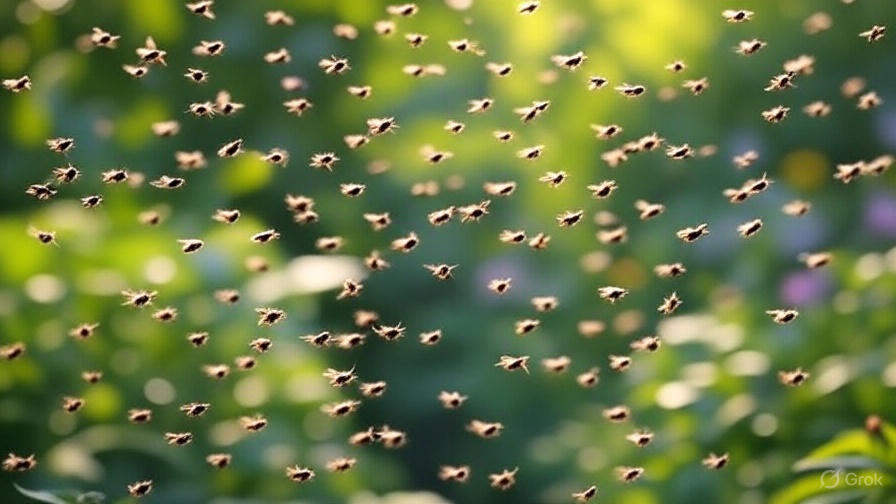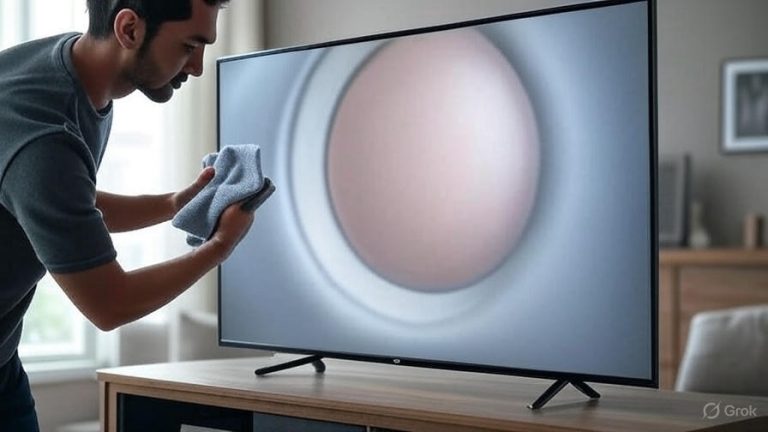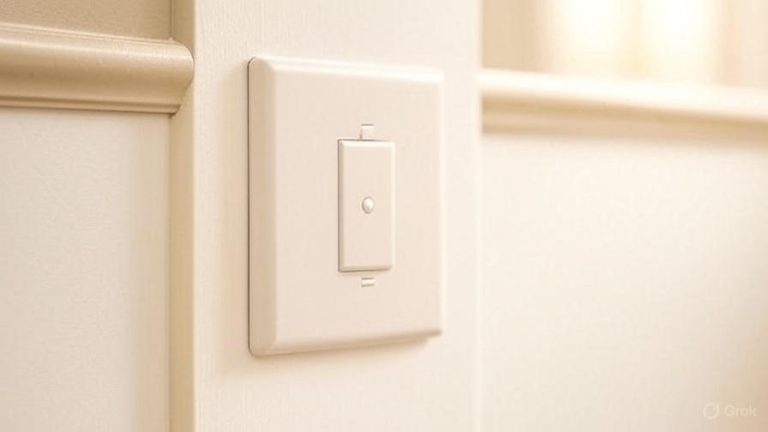How to Get Rid of Gnats?
Gnats buzzing around your home can drive anyone crazy. These tiny flying pests seem to appear out of nowhere and multiply faster than you can swat them. If you’re dealing with a gnat infestation, you’re not alone. Millions of homeowners face this frustrating problem every year.
The good news is that you can eliminate gnats from your home using proven methods that actually work. This comprehensive guide will show you exactly how to identify different types of gnats, eliminate their breeding sources, and prevent future infestations.
What Are Gnats and Why Do They Invade Your Home?
Gnats are small flying insects that belong to several different families. Most people use the term “gnat” to describe any tiny flying bug, but several distinct species commonly invade homes. Each type requires slightly different elimination strategies.
Fungus gnats are the most common indoor variety. These dark-colored insects measure about 1/8 inch long and have long legs and antennae. They love moist soil and decaying organic matter, making houseplants their favorite breeding ground.
Fruit flies, often confused with gnats, are slightly larger and have red eyes. They’re attracted to overripe fruit, sugary substances, and fermented materials. While technically different from gnats, most homeowners treat them the same way.
Drain flies, also called moth flies, are fuzzy-looking insects that breed in sink drains, shower drains, and other moist areas. They have a distinctive moth-like appearance with hairy wings.
Eye gnats are particularly annoying because they’re attracted to moisture around your eyes, nose, and mouth. These tiny pests can be difficult to eliminate because they breed in various organic materials.
Signs of a Gnat Infestation
Recognizing a gnat problem early helps you address it before it becomes overwhelming. The most obvious sign is seeing the adult insects flying around your home. You’ll typically notice them near windows, houseplants, kitchens, and bathrooms.
Small black specks on plant soil surfaces often indicate fungus gnat larvae. These larvae look like tiny white worms with black heads and feed on organic matter in potting soil.
Clusters of small insects around fruit bowls, garbage cans, or compost bins suggest fruit fly activity. These areas provide the food sources that attract breeding adults.
Slow-moving, fuzzy insects emerging from drains point to drain fly infestations. You might notice them most during evening hours when they’re more active.
Why Gnats Are Attracted to Your Home
Understanding what attracts gnats helps you eliminate the root causes of infestations. Moisture is the primary factor that draws these insects indoors. Overwatered plants, leaky pipes, and high humidity create ideal breeding conditions.
Organic matter provides food for both adult gnats and their larvae. Decomposing plant material, food scraps, and even organic potting soil can sustain large populations.
Sugary substances attract fruit flies and some gnat species. Spilled juice, sticky residues, and fermenting materials act like magnets for these pests.
Poor sanitation creates multiple attraction points. Dirty dishes, garbage buildup, and neglected cleaning allow populations to explode.
Houseplants often become gnat breeding grounds when soil stays too moist. The combination of organic matter and moisture creates perfect nurseries for fungus gnats.
Immediate Steps to Stop Gnat Reproduction
Taking quick action prevents small problems from becoming major infestations. Start by removing standing water from all areas of your home. Empty saucers under plants, fix leaky faucets, and eliminate any water accumulation.
Clean up all food sources immediately. Store ripe fruit in the refrigerator, clean spills right away, and keep surfaces free of sticky residues. Take out garbage regularly and keep bins tightly sealed.
Reduce watering frequency for houseplants. Allow soil to dry between waterings, and remove any dead plant material from pots. This simple step often eliminates fungus gnat breeding sites.
Vacuum flying adults whenever you see them. While this doesn’t solve the root problem, it reduces the number of reproducing insects and provides immediate relief.
Natural Methods to Eliminate Gnats
Many homeowners prefer natural solutions that don’t involve harsh chemicals. These methods can be highly effective when applied correctly and consistently.
Apple cider vinegar traps work exceptionally well for fruit flies and some gnat species. Fill a small bowl with apple cider vinegar and add a few drops of dish soap. The vinegar attracts the insects, while the soap breaks surface tension, causing them to drown.
Wine traps function similarly to vinegar traps but may be more attractive to certain species. Use old wine or mix a small amount of wine with water in a shallow dish.
Sticky traps catch flying adults and help you monitor infestation levels. Yellow sticky traps work best for most gnat species. Place them near problem areas like plants and windows.
Diatomaceous earth kills larvae in soil when sprinkled on the surface. This natural powder damages the exoskeletons of soft-bodied insects but remains safe for humans and pets when you use food-grade varieties.
Essential oils can repel gnats when used properly. Peppermint oil, tea tree oil, and lemongrass oil all have insect-repelling properties. Mix a few drops with water in a spray bottle and apply to problem areas.
Sand barriers prevent fungus gnats from laying eggs in plant soil. Spread a thin layer of sand over the soil surface to create a barrier that adults cannot penetrate.
Chemical Solutions for Stubborn Infestations
When natural methods aren’t enough, chemical solutions can provide more aggressive control. Always read labels carefully and follow application instructions exactly.
Pyrethrin-based sprays kill adult gnats on contact. These products derive from chrysanthemum flowers and break down quickly in the environment. Spray flying insects directly for best results.
Systemic insecticides protect plants from the inside out. These products absorb into plant tissue and kill larvae that feed on roots. Use only products labeled for indoor plants and follow application rates carefully.
Beneficial nematodes provide biological control for soil-dwelling larvae. These microscopic worms attack gnat larvae without harming plants or beneficial insects. They work best in consistently moist soil.
Bacillus thuringiensis israelensis (BTI) targets fly and mosquito larvae specifically. This biological control agent kills larvae without affecting other insects or plants. Apply according to package directions for best results.
Room-by-Room Elimination Strategies
Different rooms require different approaches based on the conditions that attract gnats. Customizing your strategy for each area improves your success rate.
Kitchen Elimination
The kitchen often harbors the most gnat problems because of food sources and moisture. Start by deep cleaning all surfaces, paying special attention to areas around the sink and stove.
Check for hidden spills behind appliances and in cabinets. Clean out garbage disposals thoroughly, as food particles often accumulate there. Run ice cubes through the disposal to help dislodge debris.
Store all fruit in the refrigerator until the infestation is under control. Keep counters completely clean and dry, wiping up spills immediately.
Inspect and clean out drain lines if you notice drain flies. Pour boiling water down drains, followed by a mixture of baking soda and vinegar. Let this sit for several hours before flushing with hot water.
Bathroom Solutions
Bathrooms provide moisture and organic matter that attract certain gnat species. Improve ventilation by running exhaust fans during and after showers.
Clean drains regularly to prevent drain fly breeding. Use a drain brush to remove hair and soap buildup that creates breeding sites.
Fix any leaks promptly, as even small drips can sustain populations. Check under sinks and around toilet bases for hidden moisture problems.
Keep bathroom surfaces dry between uses. Wipe down shower walls and tub areas to eliminate standing water.
Living Room and Bedroom Tactics
These rooms typically have fewer moisture sources, but houseplants can still create problems. Examine all plants for signs of infestation and adjust watering schedules.
Vacuum regularly to remove any larvae or eggs that might be present in carpets or furniture. Pay attention to areas around windows where adults might gather.
Check for hidden moisture sources like leaky windows or poor ventilation. Address any issues that create humid conditions.
Houseplant Management
Plants often serve as the primary breeding ground for fungus gnats. Proper plant care eliminates most indoor gnat problems.
Repot severely infested plants using fresh, sterile potting mix. Remove as much old soil as possible from roots before replanting.
Adjust watering practices to allow soil to dry between waterings. Most houseplants prefer slightly dry conditions over constantly moist soil.
Remove dead leaves and debris from soil surfaces regularly. This organic matter provides food for larvae and adults.
Consider using self-watering systems that deliver water directly to root zones while keeping soil surfaces dry.
Prevention Strategies That Actually Work
Preventing future infestations is easier than eliminating existing ones. These strategies create conditions that discourage gnat breeding and survival.
Maintain proper humidity levels throughout your home. Use dehumidifiers in damp areas and ensure adequate ventilation in all rooms.
Establish regular cleaning routines that eliminate food sources and breeding sites. Clean up spills immediately, take out garbage regularly, and keep surfaces sanitized.
Inspect new plants before bringing them indoors. Quarantine new plants for several weeks to ensure they’re not carrying pests.
Fix moisture problems promptly. Address leaks, improve drainage, and eliminate standing water sources as soon as you notice them.
Monitor your home regularly for early signs of problems. Catching infestations early makes elimination much easier and more effective.
Common Mistakes That Make Gnat Problems Worse
Many homeowners unknowingly create conditions that encourage gnat infestations. Avoiding these mistakes helps prevent problems from developing.
Overwatering houseplants is the most common mistake that leads to fungus gnat problems. Most plants need less water than people think, and constantly moist soil creates ideal breeding conditions.
Using poor-quality potting soil can introduce pests directly into your home. Some cheap potting mixes contain organic matter that’s already decomposing, providing immediate food sources for gnats.
Ignoring small populations allows them to multiply rapidly. A few gnats can become hundreds within weeks under ideal conditions.
Focusing only on killing adults without addressing breeding sites ensures the problem continues. Larvae in soil and other organic matter will keep producing new adults.
Using the wrong type of trap wastes time and allows populations to grow. Different gnat species respond to different attractants, so identify your pest correctly before choosing control methods.

How Long Does It Take to Eliminate Gnats?
The time needed to eliminate gnats depends on several factors, including the size of the infestation, the species involved, and how consistently you apply control methods.
Small infestations caught early often clear up within one to two weeks with proper treatment. Larger infestations may take four to six weeks to eliminate completely.
Fungus gnats typically take longer to control because their life cycle continues in plant soil. You may need to maintain treatment for several weeks to catch all emerging adults.
Drain flies can be eliminated quickly if you address the breeding sites effectively. Thorough drain cleaning often solves the problem within a few days.
Fruit flies respond quickly to trap placement and sanitation improvements. Most fruit fly problems resolve within one to two weeks with consistent effort.
When to Call Professional Pest Control
Some situations require professional intervention to achieve effective control. Recognizing when you need help prevents wasted time and frustration.
Massive infestations that don’t respond to home treatments may require professional-grade products and application techniques. Professionals have access to more powerful tools and can identify specific species for targeted treatment.
Recurring problems despite consistent treatment efforts suggest underlying issues that need professional diagnosis. Hidden breeding sites or moisture problems may require expert identification.
Multiple pest species complicate treatment and may need specialized approaches. Professionals can develop comprehensive strategies that address all problems simultaneously.
Health concerns, particularly for family members with allergies or respiratory issues, warrant professional treatment to ensure safe and effective elimination.
DIY Gnat Trap Recipes That Work
Making your own traps saves money and often works better than commercial products. These recipes use common household items to create effective gnat control tools.
Basic Vinegar Trap
Mix equal parts apple cider vinegar and water in a shallow dish. Add a few drops of liquid dish soap to break surface tension. Cover with plastic wrap and poke small holes in the top.
Wine Trap Variation
Use old wine or mix wine with water in a 1:1 ratio. Add dish soap and place in areas where you see the most activity. The fermented smell attracts fruit flies and some gnat species.
Beer Trap
Stale beer works similarly to wine traps. Pour beer into a shallow container and add soap to prevent escape. This trap works particularly well for fruit flies.
Honey Trap
Spread honey on yellow sticky cards or paper. The sweet smell attracts gnats, and the sticky surface traps them. Replace when the surface becomes covered with insects.
Seasonal Gnat Control Strategies
Gnat problems often follow seasonal patterns, with certain times of year presenting greater challenges. Adapting your approach to seasonal conditions improves your success rate.
Spring brings increased moisture and new plant growth, creating ideal conditions for gnat reproduction. Start prevention measures early in the season, before problems develop.
Summer heat and humidity can accelerate gnat reproduction cycles. Maintain consistent moisture control and sanitation practices during hot weather.
Fall introduces new organic matter as plants begin dormancy. Clean up fallen leaves and plant debris promptly to eliminate breeding sites.
Winter heating can create dry conditions that discourage some gnat species, but heated homes with houseplants still provide suitable breeding environments.
Long-Term Management and Monitoring
Successful gnat control requires ongoing attention and monitoring. Establishing good habits prevents future infestations and catches problems early.
Weekly plant inspections help identify emerging problems before they become serious. Look for signs of larvae in soil and adjust care practices accordingly.
Monthly deep cleaning eliminates accumulated organic matter and moisture sources. Focus on areas that are easily overlooked during regular cleaning.
Seasonal maintenance addresses changing conditions that might attract gnats. Adjust humidity levels, plant care routines, and cleaning schedules based on seasonal needs.
Keep monitoring tools in place even after eliminating current infestations. A few strategically placed sticky traps help you catch new problems quickly.
Conclusion: Your Gnat-Free Home Awaits
Eliminating gnats from your home requires a comprehensive approach that addresses both immediate control and long-term prevention. By understanding what attracts these pests and implementing targeted elimination strategies, you can reclaim your living space from these annoying insects.
Remember that consistency is key to successful gnat control. Small daily actions like proper plant watering, immediate cleanup of spills, and regular sanitation make the biggest difference in preventing infestations.
Start with the identification and elimination of breeding sites, as this addresses the root cause of your problem. Use traps and other control methods to manage flying adults while you work on environmental modifications.
Don’t get discouraged if you don’t see immediate results. Gnat control often takes time because you need to break the reproduction cycle. Stay consistent with your chosen methods, and you’ll see steady improvement over the following weeks.
Your persistence will pay off with a comfortable, gnat-free home where you can enjoy your plants, food, and living spaces without the constant annoyance of flying pests. Take action today, and start implementing these proven strategies to eliminate gnats from your home for good.







